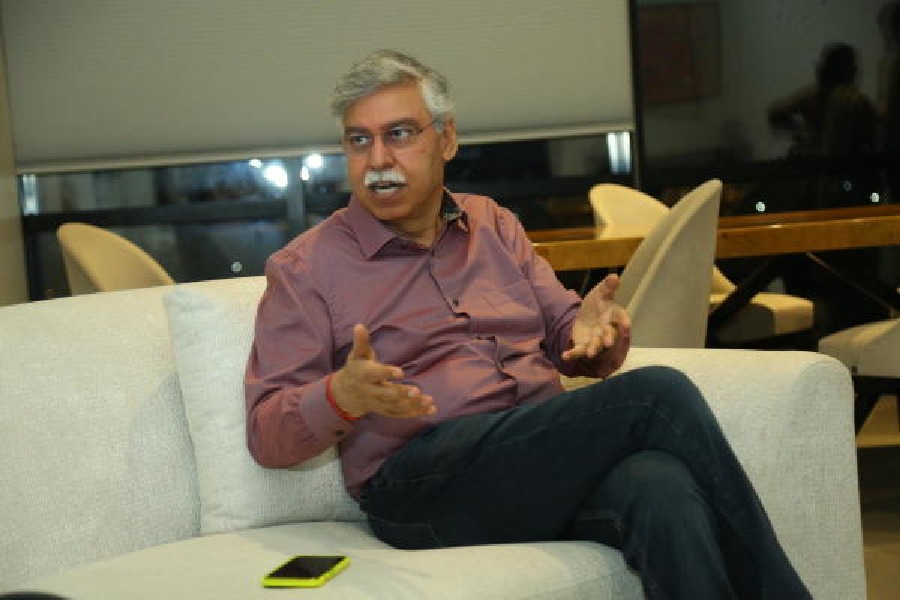Serendipity Arts Festival is all set to kick off its eighth edition in Goa tomorrow and before all the action of South Asia’s biggest inter-disciplinary festival pulls artists, curators, and art enthusiasts from across India and beyond to the coastal region for nine days, we caught up with Sunil Kant Munjal, founder and patron of the Serendipity Arts, who made a rare appearance in Kolkata during Beyond Serendipity campaign at Kolkata Centre for Creativity. A Telegraph chat.
The countdown for Serendipity Arts Festival begins. Tell us about coming to Kolkata with the Beyond Serendipity campaign.
The countdown for it begins months before the actual festival kicks off in Goa every year. Serendipity Arts Festival has now, for some time, focussed on the big festival in Goa but it also does residencies in Delhi, research, publications, book reading and the like in other cities as well like Mumbai and Hyderabad. And because a lot of the festival is commissioned, it is now one of the largest festivals in the world. And since we travel with some of the projects, we thought it was about time we come to Kolkata as it’s the soul of India in so many ways. Especially as far as the arts and culture are concerned, it has been the hotbed of creativity for a very long time. We thought it’s only right that we should also come here and tell people about Serendipity and invite them and at the same time learn from here.
I am sure Serendipity has grown over the years. What can one expect at the eighth edition?
The festival has now become very large; it has grown every year ever since 2016, when it started. For two years during the Covid pandemic, we took a break from the physical festival but created the world’s first digital festival. So it has grown in size, scale, quality, depth, and diversity. I am told that we have become one of the largest patrons of performing arts and it has now caught the attention of many intellectuals. It’s not just the exhibits but conferences and workshops with academics, researchers, and museologists who like to join in the conversation. So, it’s now attracting visitors from about 40 countries. We can’t bring all the participating artists to the venue so we have their artworks. We also invite artisans as we do multiple projects to revive the declining crafts of India. Our curators go and work with them to modify their art for contemporary consumers. We also invite artists from our Young Subcontinent project wherein we call young artists from the entire neighbourhood like Afghanistan to Myanmar, to be a part of Serendipity. It’s not a place where you sell art but encourage people to expose themselves to a variety of art forms. It’s also focussed on inclusion, making art available for people to see as art has unfortunately become exclusive over the last 30-40 years. So we are trying to break down the barrier of access and the barrier of silos. Our curators are literally the best in their field of work and they work together in different disciplines. We also have an army of volunteers who are trained thoroughly in specific sectors.
Any new addition that has happened to Serendipity this year that you can point out?
The only way to know is to come and witness it. It has now got a life of its own. It just expands even if we say we want to limit it. It is growing in the quality of performances, visitors…. We are getting busloads of young kids from orphanages, schools, transgenders, visually challenged students, elderlies from old age homes, and more to give them access to art.
Since you mentioned that Kolkata is the hotbed of creativity, can we expect more participation from Kolkata at this year’s festival?
We are not focussed on any one region but, of course, we have a lot of participation from Kolkata. Even in previous years, we have had some very established names, like Usha Uthup and Bickram Ghosh, being a part of it. Several Kolkatans also make sure to mark their attendance every year. The richness of the culture here, people’s leaning towards an intellectual conversation, and experimentation in all forms of art are quite known. And I don’t think Santiniketan started the dialogue or movement of arts in Bengal but it just channelised it and it’s one of the most creative regions in the country.
Picture: Koushik Saha
